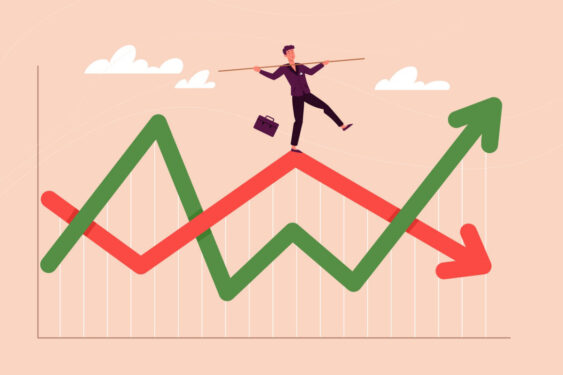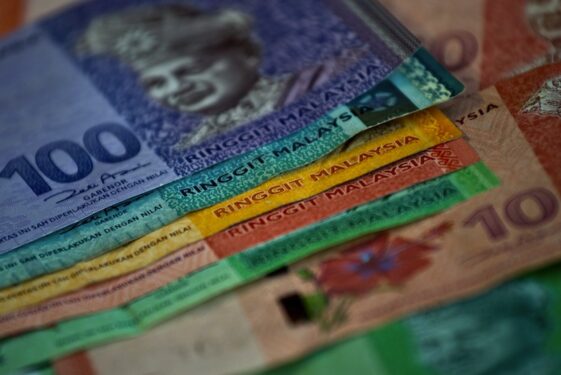Can turbocharged 2Q 2022 GDP be sustained? By Lee Heng Guie
savemalaysia
Publish date: Sat, 13 Aug 2022, 07:38 PM
WITH the re-opening of economy and international borders amid transitioning into endemic phase, robust domestic demand – especially private consumption and continued exports –have delivered an exceptional 8.9% year-on-year (yoy) real gross domestic product (GDP) for Malaysia in 2Q 2022 (1Q 2022: 5.0%).
On a monthly compilation, real GDP grew by 5.6% yoy in April and 5.0% yoy in May before expanded robustly by 16.5% yoy in June, largely boosted by a low base effect in June 2021 in view of the imposition of a total lockdown.
The extraordinary 2Q 2022 GDP growth marks the strongest pace of growth since 2Q 2010 (9.0%), taking the average GDP growth to 6.9% in 1H 2022.
This 2Q 2022 GDP number is a huge surprise considering the markets expected 7.0% growth. Following a much higher 2Q GDP, we have revised this year’s GDP estimate to 6.5% in 2022 from 5.2% previously. We maintain our real GDP growth forecast of 4.2% for 2023.
Uneven pace

Looking behind the numbers, the recovery pace remains uneven among major economic sectors. Both services and manufacturing sectors have showed stronger-than-expected growth in 2Q 2022; the construction sector has rebounded but still weak while the mining and agriculture sectors declined.
The services sector has surpassed expectations to grow by 12.0% yoy in 2Q 2022 (6.5% in 1Q 2022), thanks to a revival in domestic demand and tourism-related activities. We expect the services sector to continue to underpin GDP but increasing prices and higher cost of living will damp services demand in 2H 2022.
The manufacturing sector expanded by 9.2% in 2Q 2022 (6.6% in 1Q), boosted by unexpectedly strong surge of 14.5% yoy and 12.9% month-on-month (mom) in June. There was a substantial jump in the production of electronics and electrical (E&E) products as well as transport equipment.
With the expected softening global demand, the production and exports of E&E products are expected grow at moderate pace in 2H 2022.
It is a relief that the construction sector has finally turned around to grow by 2.4% in 2Q 2022 (-6.2% in 1Q) after being trapped in negative territory in 2021. Nevertheless, the sector’s growth momentum will continue to be challenged by the shortage of workers and increased cost of building materials.
Robust consumer spending
Consumers would be the deciding force in deciding whether the turbocharged 2Q 2022 GDP growth can be sustained in the quarters ahead.
The drivers for a robust private consumption growth in 2Q 2022 (18.3% yoy vs 5.5% in 1Q 2022) are the release of pent-up consumer spending supported by continued cash handouts; the fourth withdrawal of Employee Provident Fund (EPF) money estimated RM45 bil as well as higher demand during the Hari Raya festive celebration.
In addition, there was a revival in the tourism industry albeit largely supported by domestic tourists as foreign tourists are gradually returning.
As consumer spending accounts for 58.8% of the Malaysian economy, we have been closely watching for signs of a cool-down. Will robust consumer spending growth continue unabated in 2H 2022 and in 2023?
Going into 2H 2022 and in 2023, we remain wary about the strength of consumer spending on rising inflation, higher cost of living and the tapering effect of consumption and cash flow assistance measures such as the ending of targeted loan repayment assistance, and resumption of the EPF employees’ contribution rate starting July 2022.
While consumers keep up their spending, price increases and higher cost of living are weighing on them which could soon lead to a change in behaviour.
Some consumers have locked-in purchase of cars in June 2022 due to the expiry of sale and service tax (SST) exemption and have front-loaded purchases of items in anticipation of higher price increases ahead.
More interest rate hikes
The mood of shoppers is expected to remain cautious due to rising prices as consumers tightened their purse strings on consumer durables and big-ticket items.
The Consumer Sentiments Index dipped far below the 100-point optimism threshold to a four-quarter low of 86 in 2Q 2022 on tight present and expected household finances amid less inspiring employment outlook.
Essentially, Malaysians are having to spend more to buy the same amount of goods and services. Real consumer spending devalues as inflation increases.
Despite an increase in nominal wage growth in 2Q 2022 (private sector: +7.8%; manufacturing: +5.2% and services: +9.3%), the increase in prices have eaten into the increase in wages. As a result, many households are having to dip into their savings or take on debt to fund their spending.
Bank Negara Malaysia (BNM) has been raising interest rates since May to 2.25% currently, and will continue to increase further to keep a check on both headline and core inflation. June’s inflation of 3.4% is expected to average higher in the months ahead. Higher interest rates will hit high leveraged borrowers amid improved interest income for net savers.
Private investment has gained higher growth traction in 2Q 2022 (6.3% yoy vs 0.4% in 1Q 2022) due to improvement in structures and continued expansion in machinery and equipment investment. But, the headwinds remain: shortage of workers, increased costs, weakening ringgit and concerns about slowing global growth and recession risk in the US economy.
Financial prudence rules
While businesses are expecting a cautious business and demand outlook in the months ahead, retailers have experienced somewhat much slower sales but not seen a sharp plunge in consumer spending.
On the external sector, exports are expected to grow at a more moderate pace of averaging 15.3% per annum in 2H 2022 from an average growth of 26.1% in 1H 2022. This reflected the impact of weakening global economy as well as easing commodity and energy prices.
We concur with the central bank’s assessment of downside risks to the growth outlook. These include the deceleration in global growth’ and we are concerned about recession risks in the US economy and Europe.
Adding to this is supply disruptions and further increases in energy and commodity prices, acute labour shortages, stronger cost and price pressures as well as the disruptive impact of higher US interest rates on global financial and foreign exchange markets.
We believe that policymakers need to watch consumption and business investment for signs of cyclical strength or weakness over the next six to 12 months. Lingering concerns about the global and US economy prospects, softening demand, inflation and cost pressures would weigh on household consumption and business activity.
We believe that BNM will take into consideration the impact of its gradual and measured pace of interest rate hiking trajectory due to growth risks while keeping inflation under its radar. – Aug 13, 2022
Lee Heng Guie is the executive director at Socio-Economic Research Centre (SERC) Malaysia.
https://focusmalaysia.my/can-turbocharged-2q-2022-gdp-be-sustained/
More articles on save malaysia!
Created by savemalaysia | Sep 21, 2024
Created by savemalaysia | Sep 21, 2024
Created by savemalaysia | Sep 21, 2024
Created by savemalaysia | Sep 21, 2024




















